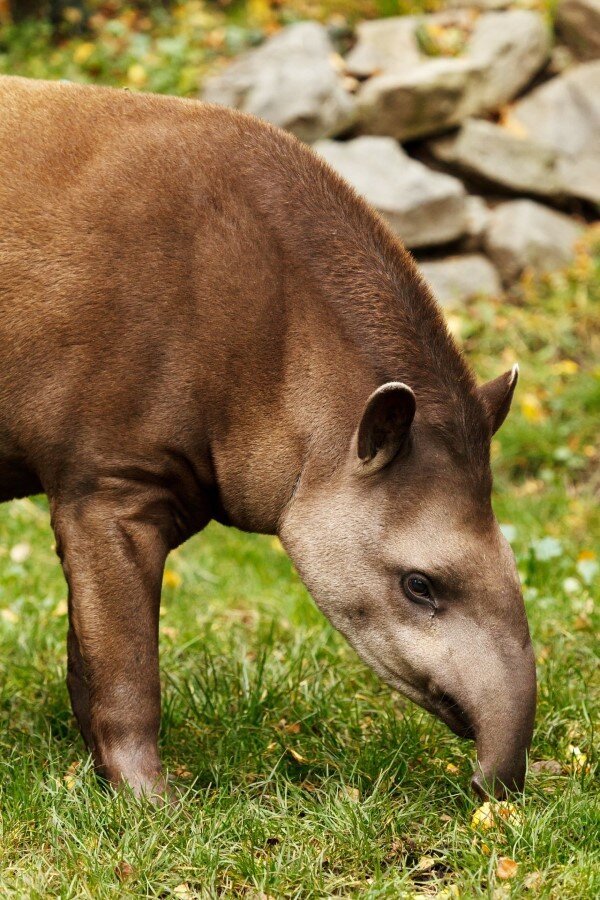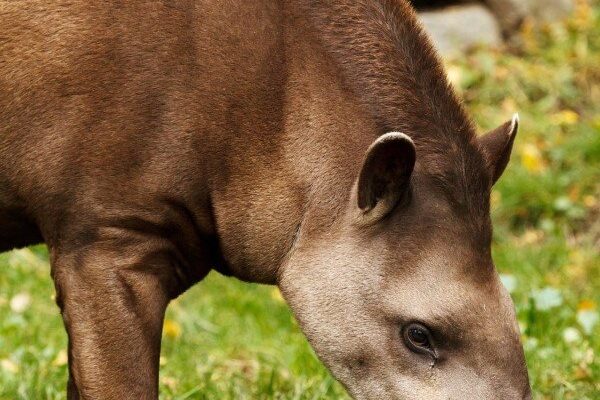
Understanding how to react to a Brazilian tapir encounter is crucial. It’s not every day you see one of these unique animals, and knowledge can help ensure both your safety and their well-being. Let’s dive into everything you need to know about tapirs, their behavior, and the best practices for encountering them in the wild.
Understanding the Brazilian Tapir
Brazilian tapirs are large, herbivorous mammals native to South America’s lush rainforests. They typically weigh between 550 to 900 pounds and have a distinct, rounded body covered in short, bristly hair. You might think of them as the gentle giants of the forest. Their most remarkable feature is their long, flexible snout, which they use to grasp leaves, fruits, and twigs.
These animals are usually solitary and shy, preferring to stay hidden in the underbrush. Their habitat ranges from forested areas to riverbanks, where they can easily find food and water. Because tapirs are primarily nocturnal, you’re more likely to encounter one during dawn or dusk when they’re out foraging.
You may find it interesting that tapirs are closely related to horses and rhinos. Their unique appearance and behavior make them a delightful, yet elusive, part of the ecosystem. Now that you know a bit about them, let’s talk about what to do if you come across a Brazilian tapir.
Stay Calm and Observe
If you spot a Brazilian tapir, the first instinct might be a mix of excitement and panic. Here’s the thing: it’s essential to **stay calm**. These animals aren’t aggressive like some of their larger counterparts. Instead, they’re more likely to freeze in place or slowly back away. Take a moment to appreciate the beauty of this creature, but do it from a distance.
Here are a few things to keep in mind when observing a tapir:
- Keep your distance: Aim to stay at least 50 feet away. This gives the tapir space to feel safe.
- Silence your surroundings: Avoid sudden movements or loud noises. Tapirs are sensitive to disturbances.
- Take pictures if you wish: Use your camera or smartphone, but make sure it’s quiet and doesn’t startle them.
By taking the time to observe, you not only enjoy a special moment but also allow the tapir to feel secure. Remember, they’re not here for entertainment; they’re living their lives just like you!
Do Not Approach or Feed
You might be tempted to get closer, maybe even feed the tapir because they look so friendly. However, this is a big no-no! Approaching or feeding wild animals can create dangerous situations—for both you and the creature.
When animals associate humans with food, it could lead them to seek out people, which often ends poorly. In some cases, it can make them feel threatened, causing them to react defensively. Here are the reasons you should keep your distance:
- Preserve their natural behavior: Wild animals thrive best when they’re left to their own devices.
- Avoid attracting more wildlife: Feeding tapirs might also encourage other animals to come closer, which could be risky.
- Your safety: Tapirs can weigh close to 900 pounds. Even if they seem gentle, their size means they could unintentionally harm you.
So, it’s simple: enjoy the sight of the tapir, but let them be.
Know the Signs of Distress
Even though Brazilian tapirs are generally docile, there are times when they might feel threatened. If you notice any signs of distress, it’s best to quietly back away. Here’s what to look for:
- Fleeing or hiding: If the tapir starts to run or seeks cover, it feels unsafe.
- Changed posture: A tapir that stands rigid or lowers its head may be preparing to escape.
- Vocalizations: Though not very vocal, they might make sounds if they feel cornered.
Recognizing these signs can help you assess the situation. If a tapir feels threatened, the best response is to give it space and quietly retreat to avoid escalating any stress.
Report Your Encounter
If you’re fortunate enough to see a Brazilian tapir, consider reporting your sighting. Conservation organizations and local wildlife authorities often appreciate such information. Your encounter can contribute to their understanding of tapir populations and behaviors in the wild.
When reporting, provide details such as:
- Location: Where you spotted the tapir (coordinates are best if you have them).
- Date and time: When the sighting occurred.
- Description: Include details about the tapir’s behavior and any other relevant observations.
This information can help track tapir populations and assist in conservation efforts, ensuring these magnificent animals continue to roam the forests for generations to come.
Understanding Their Importance in Ecosystems
You might be wondering why tapirs matter in the grand scheme of nature. Well, tapirs play a vital role in their ecosystems. As herbivores, they help maintain plant communities by consuming a variety of vegetation and dispersing seeds through their droppings. This function is crucial for the health of rainforest habitats.
Furthermore, preserving their habitat means preserving countless other species that share the same environment. By being mindful of tapirs and their needs, we can contribute positively to biodiversity and ecological balance.
Final Thoughts on Brazilian Tapir Encounters
Encountering a Brazilian tapir in the wild can feel like a dream come true. However, it’s essential to approach such moments with respect and understanding. Remember to stay calm, observe from a distance, and avoid any actions that could stress the animal.
By practicing these guidelines and understanding the role of tapirs in their ecosystems, you can help ensure a future where these enchanting creatures continue to thrive in the wild. So next time you’re wandering through the rainforest, keep your eyes peeled—you never know when you might spot one of these gentle giants!

